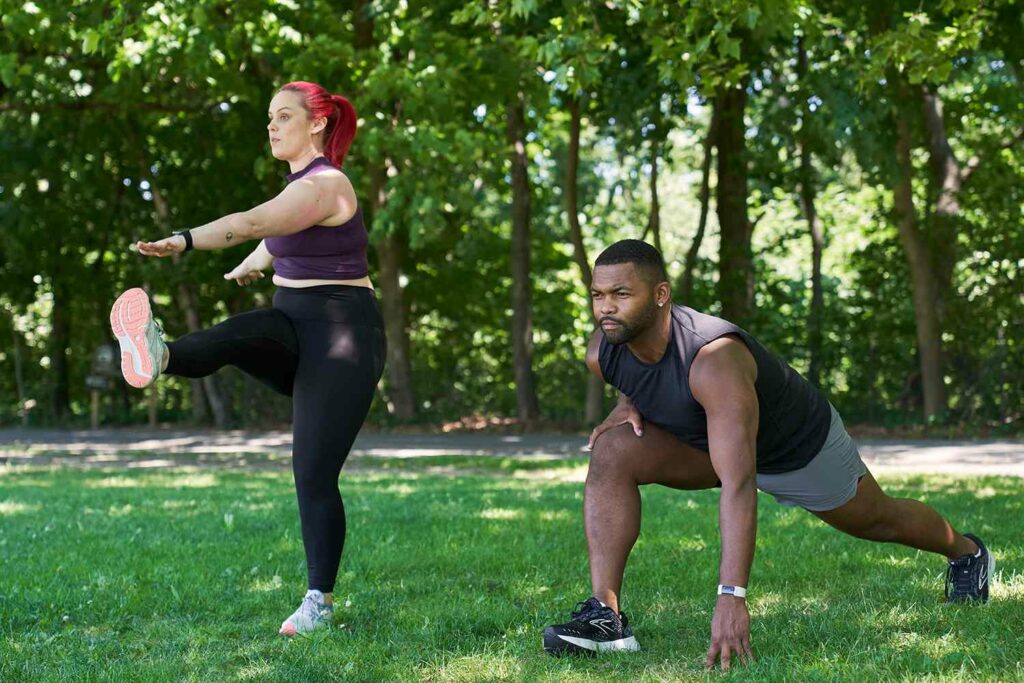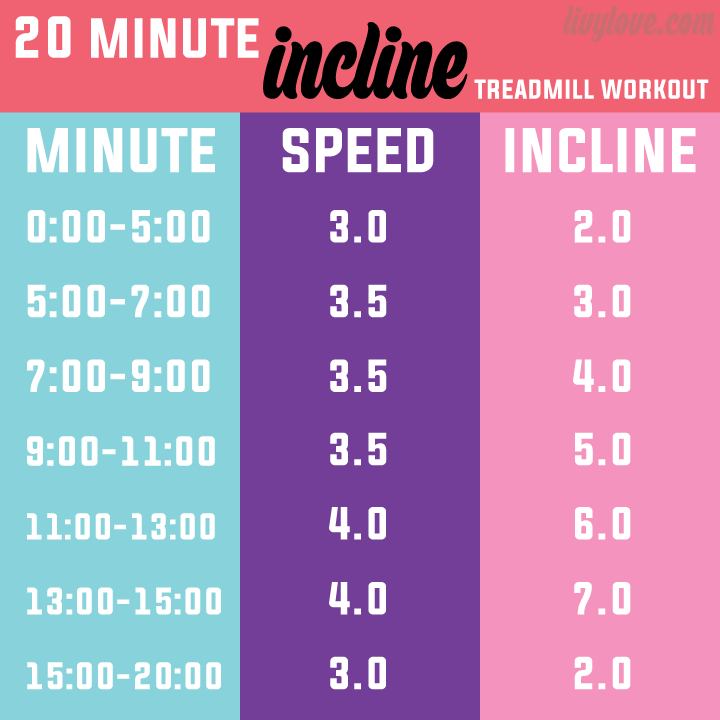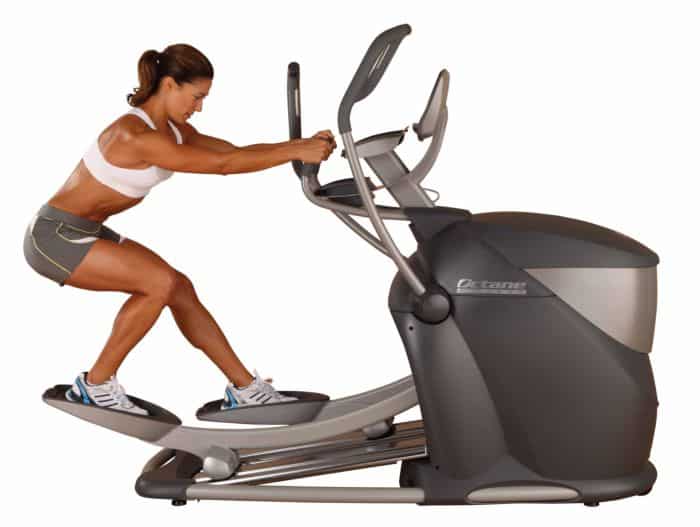Get ready to move and groove! Workouts aren’t just exercises; they’re your fun ticket to feeling awesome. Sweat it out, feel strong, and enjoy the boost of energy – your body’s cheering you on.
The versatility of elliptical training! This guide covers warm-ups, resistance strategies, interval workouts, and cool-downs. Learn to maximize calorie burn, engage muscles effectively, and tailor your elliptical routine to your fitness goals.
Let’s elevate your well-being with Elliptical Workouts! LeafAbout’s guide ensures a transformative fitness journey from joint-friendly exercise to sculpting your physique. Start today for lasting health and vitality
The Basics Of Elliptical Workouts – Unlock Your Fitness!
“The Basics of Elliptical Workouts” emphasizes the fundamental knowledge needed for effective elliptical exercises.
Whether you’re new to fitness or seeking to improve your workout routine, grasping the essentials is crucial. LeafAbout’s comprehensive guide simplifies the intricacies of elliptical workouts, offering expert insights and practical tips to help individuals master the use of the elliptical machine.
This ensures that even beginners can confidently engage in elliptical exercises, making the most out of their fitness experience.
Why We Need Elliptical Workouts – Embrace Healthier Life!
Elliptical workouts offer a versatile and effective way to improve overall fitness. They provide a low-impact option for cardiovascular exercise, making them gentle on joints while still engaging multiple muscle groups.
Whether you’re aiming for weight loss, enhanced cardiovascular health, or a full-body workout, elliptical exercises offer a practical and accessible solution. Incorporating elliptical workouts into your routine can improve endurance, weight management, and overall well-being.
Crafting Effective Cardio Workouts – Elevate Your Heart, Boost Your Health!

Cardiovascular workouts, commonly known as cardio exercises, are crucial in maintaining overall health and fitness.
These workouts focus on elevating the heart rate, increasing respiratory activity, and improving the efficiency of the cardiovascular system. Here are key aspects to consider when incorporating cardio workouts into your fitness routine:
1. Types of Cardio Exercises:
Cardio workouts encompass many activities that engage large muscle groups and increase oxygen consumption.
Common forms include running, jogging, cycling, swimming, jumping rope, brisk walking, dancing, and aerobics. The exercise choice depends on personal preferences, fitness level, and available equipment.
2. Intensity Levels:
This can be classified into different intensity levels. Low-intensity steady-state (LISS) involves sustained, moderate-intensity activities like walking, while high-intensity interval training (HIIT) alternates between short bursts of intense effort and rest periods.
The intensity can be adjusted based on fitness goals, with HIIT being particularly effective for calorie burning and cardiovascular improvements.
3. Duration and Frequency:
The American Heart Association advises engaging in a minimum of 150 minutes of moderate-intensity aerobic activity or 75 minutes of vigorous-intensity aerobic activity each week, distributed across the week.
This translates to about 30 minutes a day, five times a week. Beginners may start with shorter sessions and gradually increase duration as fitness improves.
4. Variety and Enjoyment:
Incorporating a variety of cardio exercises not only prevents monotony but also engages different muscle groups.
Choose activities you enjoy to make your workouts more sustainable in the long run. Whether cycling, dancing, or hiking, finding enjoyable activities can enhance adherence to your fitness routine.
5. Warm-Up and Cool Down:

A proper warm-up is essential before engaging in cardio exercises. This phase prepares the body for increased activity and helps prevent injuries.
Dynamic stretches and light aerobic exercises are effective components of a warm-up routine. Similarly, cooling down with static stretches aids in flexibility and promotes recovery.
6. Progressive Overload:
To continue reaping benefits from cardio workouts, progressively challenge your body. Increase the intensity, duration, or frequency of your sessions over time. This principle of progressive overload helps avoid plateaus and ensures ongoing cardiovascular improvements.
7. Consistency is Key:
Consistency is crucial for cardiovascular health. Regular, sustained effort is necessary to maintain and enhance aerobic fitness. Establishing a consistent workout routine is vital for long-term health benefits.
8. Monitor Intensity:
Monitoring your heart rate during cardio workouts can provide insight into the intensity of your exercise. This can be done manually by checking your pulse or by using heart rate monitors. Tracking intensity helps ensure you work within your target heart rate zone for optimal cardiovascular benefits.
Incline And Speed Intervals – Powerful Blend!

Incline and speed intervals are a form of high-intensity interval training (HIIT) that combines changes in both speed and incline on cardio equipment like treadmills, elliptical trainers, or stationary bikes.
This type of workout adds variety, intensity, and efficiency to cardiovascular training. Here we discuss how to incorporate incline and speed intervals into your workout routine:
1. Equipment:
- Treadmill: Adjust the incline and speed settings.
- Elliptical Trainer: Modify resistance levels and speed.
- Stationary Bike: Adjust resistance and pedal speed.
2. Incline Intervals:
- Set the Incline by begin with a flat or low incline (around 1-2%).
- Gradually increase the incline to create a challenging uphill effect.
- Work at the elevated incline for 1-2 minutes.
- Reduce the incline back to a flat or lower setting.
- Recover for 1-2 minutes at an easier pace.
- Repeat it alternate between incline intervals and recovery periods.
3. Speed Intervals:
- Increase the treadmill speed or pedal faster on an elliptical or stationary bike.
- Work at a higher speed for 30 seconds to 1 minute.
- Reduce the speed to a comfortable, slower pace.
- Recover for 1-2 minutes.
- Repeat it alternate between speed intervals and recovery periods.
4. Combined Incline and Speed Intervals:
Once you’re comfortable with each type of interval, you can combine both for a more challenging workout.
Example:
- Start with a flat or low incline at a moderate pace for 2 minutes.
- Increase both speed and incline for an intense interval of 1 minute.
- Recover by reducing both speed and incline for 2 minutes.
- Continue this pattren for the preferred duration of your exercise session.
5. Cool Down:
Finish with a 5-10 minute cool-down at a lower intensity to gradually restore your heart rate and prevent post-exercise dizziness.
Tips:
- Listen to Your Body: Adjust the intensity based on your fitness level. Beginners may start with lower inclines and slower speeds.
- Proper Form: Maintain good posture, whether walking, running, or cycling, to avoid unnecessary strain on joints.
- Hydration: Stay well-hydrated, especially during intense intervals.
Benefits:
- Calorie Burn: Intervals maximize calorie expenditure.
- Cardiovascular Fitness: Improves heart health and endurance.
- Variety: Prevents workout boredom.
- Efficiency: Achieve results in shorter workout durations.
Always consult a healthcare professional before starting a new exercise routine, especially if you have any health concerns or conditions.
Incorporating Resistance For Muscle Gains – Power Up Workouts Now!
- Start with a comfortable pace and no resistance to get used to the elliptical motion.
- Maintain proper posture with a slight knee bend, engaged core, and light grip on handles.
- Gradually introduce resistance, starting low and increasing as you become more comfortable.
- Focus on engaging muscles, including quadriceps, hamstrings, glutes, and calves.
- Incorporate interval training by alternating between high and low resistance periods.
- Utilize reverse pedaling to target different muscle groups like hamstrings and calves.
- Use moving handlebars to engage the upper body muscles with controlled movements.
- Progressively increase resistance as your strength improves for ongoing muscle development.
- Finish with a 5-10 minute cooldown at lower resistance and include stretching for flexibility.
- Aim for consistency with 3-4 weekly elliptical sessions for optimal muscle gains and overall fitness.
The Benefits Of Elliptical Workouts – Embrace Total Well-Being Today!

- Versatile Workout Options: Elliptical machines offer various workout types, from high-intensity interval training (HIIT) to endurance sessions, allowing customization based on fitness goals.
- Joint-Friendly Exercise: Ideal for individuals with joint issues, the elliptical provides a smooth, controlled range of motion without the impact associated with running or walking on a treadmill.
- Consistent Resistance: The elliptical’s resistance settings allow users to gradually increase intensity, providing a challenging workout as fitness levels improve.
- Time-Efficient: Elliptical workouts often combine both upper and lower body movements, maximizing efficiency for those with busy schedules.
- User-Friendly Technology: Many elliptical machines have technology features like heart rate monitors and pre-programmed workouts, enhancing the user experience.
- Adaptable to Fitness Levels: Whether you’re a beginner or an advanced fitness enthusiast, elliptical workouts can be tailored to your current fitness level, promoting a gradual and sustainable progression.
Frequently Asked Question
1. How often should beginners work out on the elliptical?
Beginners should aim for 3 to 4 sessions per week, gradually increasing duration and intensity as they become more comfortable with the routine.
2. Can someone with joint problems work out on an elliptical machine?
Absolutely! Elliptical workouts are low-impact, making them gentle on the joints and offering a great exercise option for those with joint issues.
3. What’s the ideal duration for a beginner’s elliptical workout?
Starting with 15-20 minutes and gradually increasing to 30-45 minutes is ideal for beginners, allowing time for adaptation and stamina building.
4. Is warming up before every elliptical session essential?
Yes! Warming up is crucial to prepare your body, reducing the risk of injury and enhancing overall workout effectiveness.
Ending Note!
Elliptical workouts offer low-impact, full-body exercise for all fitness levels. Enhance cardiovascular health, burn calories, and target multiple muscle groups with resistance and interval training. A versatile and efficient choice for overall well-being.
Read Also:













+ There are no comments
Add yours